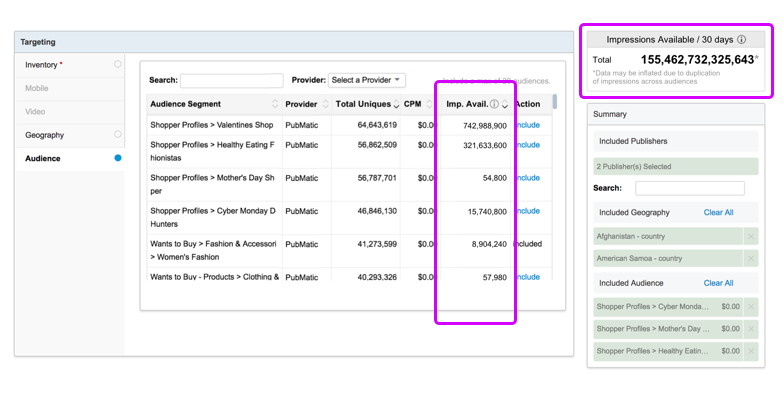At PubMatic, we value client input and are constantly working to improve our products and the user experience (UX). It is our goal to increase efficiency, drive monetization and innovate technology to fuel our partners’ successes.
Recently, we gathered client feedback and updated our PMP solutions. We start by researching and defining the key issues to address, then ideate, prototype and user-test, afterwards we build and design in QA before analyzing and iterating (looping back to previous steps to continually hone the product).
In my last post on our UX design to improve PMP deals, I provided detail on how the PubMatic team solved for five key buyer issues, focusing on the first three below:
- The manual process of finding inventory
- Negotiating per publisher is time consuming
- Lack of scale
- Need for more intuitive method to discover audiences
- Planning the success of a campaign is challenging
In this post, I will round out how we have addressed the final two challenges and what this means for our clients.
Solving for Challenges 4 + 5: Improving Audience Discovery and Campaign Planning
Two other challenges we solved for were audience discovery and campaign planning. We understood that users often don’t know how their targeting criteria is affecting their impression count. They create the deal, then come back and edit it depending on how it is performing.
To address this issue, we designed a feature that allows users to see how many available impressions they can get with their selected targeting. We based this feature on historical data to ensure accuracy for the user when planning their campaign.
At any point, the user can select specific, trusted publishers and play around with the targeting parameters to get the most impressions. We knew users needed to see the impression count prominently as they selected and unselected their criteria, therefore, we designed a persistent counter above the summary section. Once users finalize their selection, they can select “Create deal” and a deal ID will be created. The ability to see the available impressions helps buyers know what they can expect when they spend on the deal. In turn, this will improve their campaign planning and predicted outcomes.

For the discovery of audience data, buyers are have access to partnerships with data providers or, sometimes, first-party publisher data. We work with data providers and publishers to expose helpful data in a simple table where they can easily add it to their deal. Listing the available impressions for each audience segment helped users select which segments they preferred.
We plan to further develop audience discovery and targeting by adding meta-data to the targeting section so users can discover audiences publishers give them permission to view. This will provide buyers with additional insights of where and how this data was collected to protect quality. In a future development phase, we also plan to have keyword searches and use a categorical nomenclature to easily discover new types of audiences for buyers.
What’s Next?
Buyers are now able to create Targeted PMPs across multiple publishers in one deal ID, target specific geographies, ad format and platforms, and discover new audiences. They will soon be able to see how their targeting affects the available impressions for that deal and can adjust according to their goal, saving them from a back-and-forth guessing game.
We encourage all buyers and agencies to use these updated tools for PMP deals because it will improve their workflow. As always, we want to continue to refine and improve our product so if you have suggestions on how we can further improve, please reach out to your PubMatic rep. To learn more about additional product updates, check out some of our recent content or contact us.


